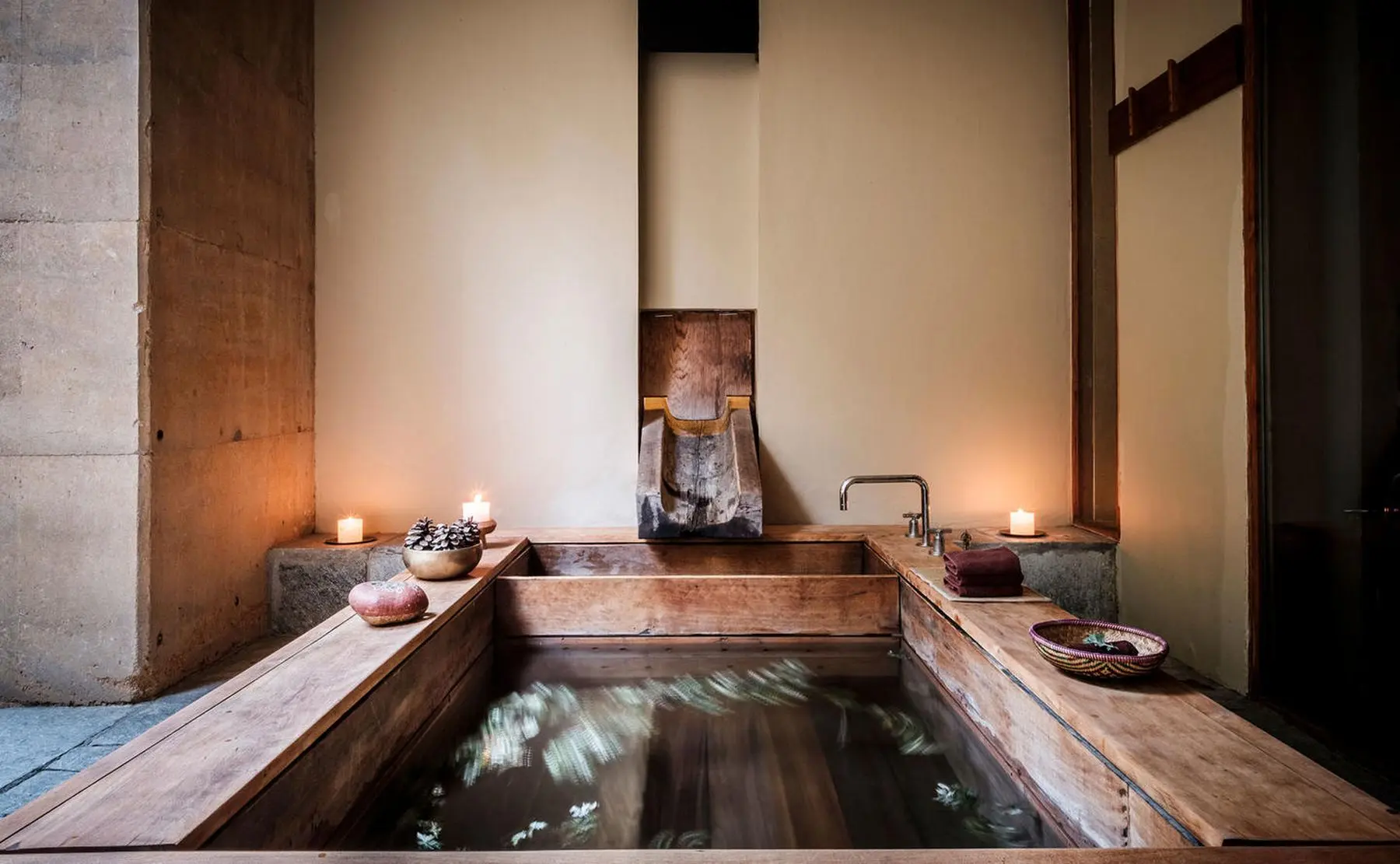Hot-stone baths have been an essential part of Bhutanese culture for more than 13 centuries. Yet this ancient wellness tradition – combining medicinal waters and hot, mineral-rich rocks – is only growing in popularity.
“Soaking in a hot-stone bath is the Bhutanese’s most beloved practice to promote holistic healing,” says Tshering Deki. She’s the proprietor of ZAnTA, a hot-stone bathhouse situated on the banks of the Paro Chhu, the river that wends its way through the Paro valley. “The demand for health and well-being treatments is increasing – both locally and globally,” she points out. But the hot-stone bath isn’t just another wellness treatment – it’s been an essential cultural ritual here for more than 13 centuries. It’s also an act of hospitality, as the host takes care – and time – to prepare the experience for guests, stoke the fire and heat the stones.
The indigenous custom dates to at least as early as the seventh century, and was later influenced by Tibetan medicine and Indian Ayurvedic wisdom. “The water we use here at ZAnTA is natural spring water,” says Tshering. “It’s got healing properties in itself, but we also infuse it with plants and tree barks that have medicinal properties.” The fragrant wormwood, or artemisia absinthium, is the most archetypal ingredient – one of two key elements in a Bhutanese hot-stone bath.
More than the medicinal waters – or menchu – it’s the mineral-rich rocks used to heat the water that make the hot-stone bath so distinctive. Pomelo-sized stones are heated in an open fire outside the private bathing facilities. These are then deposited through a discreet hatch in the wall into a closed-off section of the bath (so there’s no danger of burning yourself). As the white-hot rock breaks the water’s surface, it sizzles and spits, heating the water and releasing precious minerals. “This combination [of plants and minerals] helps with ailments such as joint pains, muscle recovery, skin conditions, stomach disorders and urinary-tract infections, as well as mental relaxation,” explains Tshering.
Traditionally found outside farm houses – in the back garden or near a river – hot-stone baths are now widely available. Today, the wooden baths, or wa, are found across the country, from isolated mountain villages to luxury, five-star resorts. “Villagers use hot-stone baths as a day-to-day cleaning ritual,” says Tshering, “while the urban population enjoys the practice as a relaxing getaway.”
Standalone hot-stone bathhouses are thriving and innovating as entrepreneurial locals respond to demand. At ZAnTA, guests can also sample dishes made using organic vegetables from the local village, or opt for an express foot bath. And, if bathing in the life-giving waters isn’t enough, many bathhouses also offer the opportunity to try Bhutan’s other aqua vitae – ara, the much-loved spirit – which is great to sip on whilst soaking up the experience.
Tshering Denkar is the travel blogger and author who changed the way the Bhutanese think about domestic travel – and indeed their country. Covering everything from the kingdom’s best treks to must-try local foods on her blog, Denkar’s Getaway, she invites readers to join her on an enthusiastic journey to discover every corner of the kingdom. Here Denkar shares her favourite hot-stone baths in the country.
Where to soak
I love to relax with a hot-stone bath at the end of a long trek. The best hot-stone baths I’ve encountered so far are in homestays in the village of Dawakha, in Haa district. The village is in the middle of the forest and wonderfully remote.
The hot-stone bath at Chapcha, in Chukha district, is the place to go for medicinal purposes. It’s said to heal stomach diseases and cancers, but even if you’re in good health it’s a treat for body and soul. A young entrepreneur runs it, and I love to support enterprising locals.
Located in the Wangduephodrang district, the hot-stone bath at Dangchu is a real wellness destination. Guests spend days – if not weeks – at the adjacent guesthouse: it’s the type of place you’ll never want to leave again because the owners are so hospitable!

